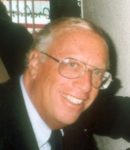By Rabbi Dr. Israel Drazin

BOCA RATON, Florida — The story of Peter Abelard (1079-1142) and Heloise (1095-1163) is considered a great medieval love story. We have still today Abelard’s autobiography and letters between the parties, so we know much but not all of the love story. James Burge’s Heloise and Abelard is an interesting easy to read scholarly study.
Peter Abelard was a famous French man, many call him the brightest philosopher of his generation. He and Heloise, last name unknown, were involved in the most memorable tragic love story of the middle ages. He had all the strengths of a logical and clear thinker; he was unafraid to take his reasoning into areas others considered unsafe. “Understanding was all-important: he believed [for example, that] it was a sin to say a prayer that one did not understand.” One of his most famous phrases was, “by doubting we come to inquiry, by inquiry we come to truth.”
He lived at the same time as the Spanish Yehuda Halevi (1075-1141). Both wrote a book about a conversation with a Jew about Judaism.
Abelard failed “completely to understand the psychology of those around him.” He also felt that those who disagreed with him were not worthy of consideration. It is likely, so it seems to me, that this personality fault did not allow him to fully understand Heloise and also caused people with ideas contrary to him to hate and seek to hurt him.
Abelard saw Heloise for the first time in 1115 when he was 36, was infatuated, and determined to seduce her. She was living at that time with her uncle, a canon, a church official. Abelard fabricated a story that he had no place to stay, requested that he be given a room at the canon’s house, and agreed to teach Heloise as part payment. He wrote in his autobiography, “He gave me complete charge over the girl…I was amazed at his simplicity – if he had entrusted a tender lamb to a ravening wolf it would not have surprised me more.”
Within a short time, Heloise was deeply in love with him. Heloise was very well educated, very articulate, and arguably a far better letter writer than Abelard. Her prose was always halfway to poetry. In her first letter to Abelard, she wrote about the depth of her love, a feeling she had until her death. “God is my witness that if Augustus, emperor of the whole world, thought fit to honor me with marriage and conferred all the earth on me forever it would be sweeter and more honorable to me to be not his empress, but your whore.”
The two crept out of their rooms at night and slept together. In 1116, a son was born. Heloise’s uncle was shocked and insisted that the two marry, which they did secretly the same year. But for reasons that are unclear, despite Heloise begging that they stay together, he sent their son to his brother for his brother to raise and sent her to a nunnery. It is possible that Abelard felt that his future prospects would be hurt if he was married because the church at that time was emphasizing celibacy.
Heloise’s uncle apparently felt he had been betrayed again by Abelard not living with his niece, so he had friends castrate Abelard in 1017. After the castration, Abelard insisted that Heloise become a nun and he became a monk. She was opposed to the idea, but he prevailed. Despite this acquiescence, she wanted at least to continue to write love letters. He refused to write about love and did not want her to do so. He wrote on occasions. His letters were not unkind, but he does not respond to Heloise pointing out that she is unhappy or respond to her emotional needs. Soon the letters stopped. For twelve years, the two did not correspond until, by some chance Heloise received a copy of Abelard’s autobiography. She wrote to him and the correspondence resumed, but, by his insistence, without words of love. Abelard continued to write philosophy including his book “Dialogue Between a Philosopher, a Christian, and a Jew;” written around 1130, and Heloise, having management skills, rose to head the monastery and increase it with several satellites.
In the years that followed, the two met together on occasions without any manifestation of love. Ultimately, the two were buried together, united in death, when being united in life was apparently impossible because of celibacy rules. Their tomb can be seen today.
*
Rabbi Dr. Drazin is a retired Army brigadier general and the author of over 50 books.